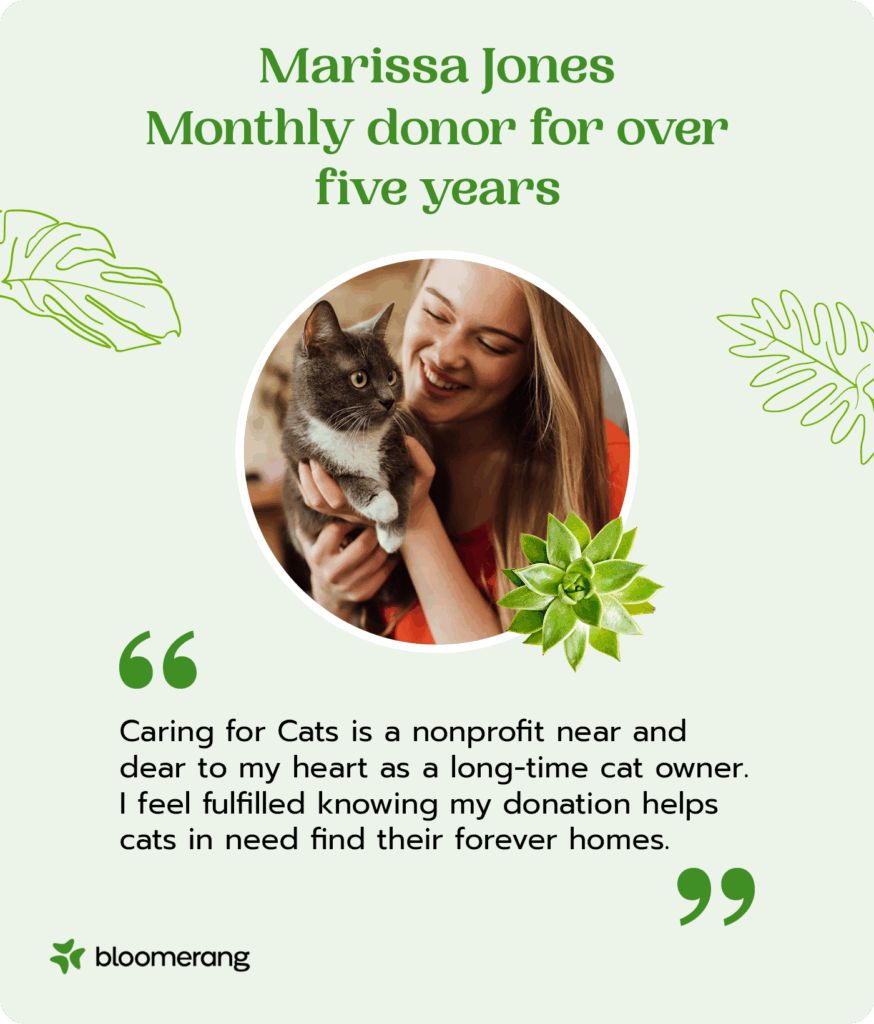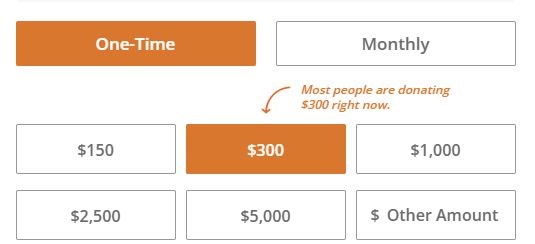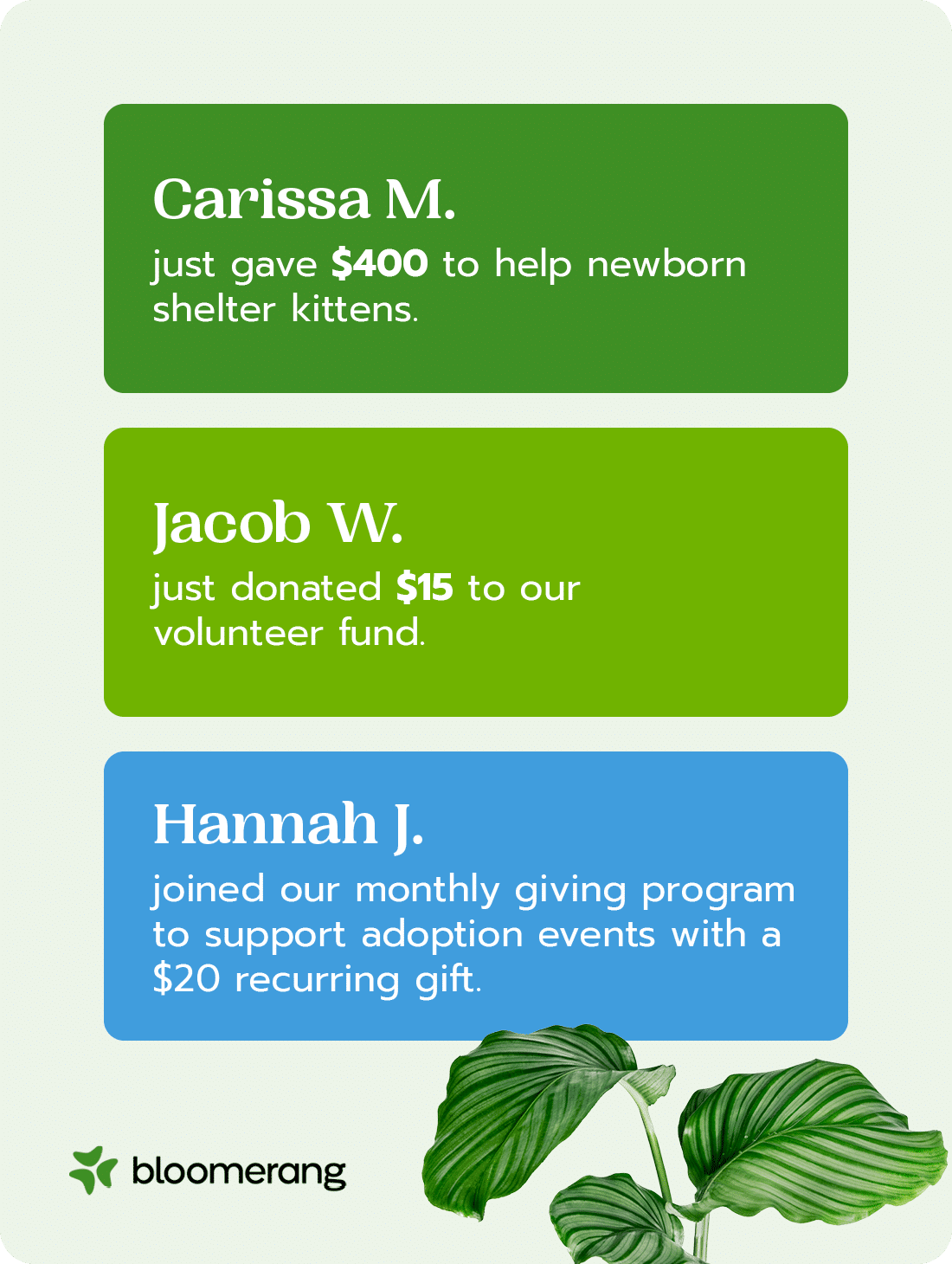Imagine you’re waiting at a gate to board a plane. All of a sudden, your fellow passengers start forming a line. You know it’s not your time to board yet, but you still feel the urge to join the line, afraid the other passengers know something you don’t about when the plane will be ready to take off.
If you’ve experienced a similar situation before, you’ve been under the unique pressure of social proof. Social proof is a psychological phenomenon where individuals imitate the actions of others in unfamiliar or ambiguous situations.
Your nonprofit organization can incorporate social proof into its online giving page to increase donations. By showing prospective donors that people like them support your mission, you can influence new supporters to get on board with your cause.
With that in mind, let’s explore five tips to effectively integrate social proof into your nonprofit’s online donation page.
1. Include a donor testimonial.
As you know, including testimonials from your nonprofit’s beneficiaries on your website is a highly effective way to draw support to your cause. Did you know you can also leverage donor testimonials to drive fundraising?
Featuring a donor testimonial on your giving form is a great way to help prospective supporters understand their potential impact on your mission by hearing directly from a first-person source.
Craft a compelling narrative for your testimonials and ensure they include the following:
- The donor’s name and length of involvement
- Type of donation (monthly gifts, annual donation, major gifts, legacy gifts, etc.)
- A photo of the donor
- A direct quote from the donor
Here is an example of what a donor testimonial may look like on your donation page:

Use the donor database in your nonprofit’s CRM to search for the right donors to request testimonials from. These individuals should be long-standing supporters of your cause with a powerful connection to your mission.
The specific individuals you feature may vary depending on the purpose of the donation form. For example, you could include testimonials from peer-to-peer fundraising participants and donors on your peer-to-peer campaign information page or the stories of event donors on your event registration form. This level of specificity will help donors better understand the precise impact they can have on different campaigns.
2. Spotlight popular giving amounts.
Make it easier for new donors to give by featuring multiple giving options and emphasizing the most popular donation amounts.
Bloomerang’s donation page guide highlights the CARE online donation form as a compelling example of spotlighting common donation amounts.

The form highlights the $300 donation amount with a note that says, “Most people are donating $300 right now.” Prospective supporters know that giving this amount will align with the organization’s donation norms and may be willing to give more than they initially intended to fit in with CARE’s donor base.
To facilitate this approach on your own donation page, determine your organization’s most popular donation amount using your fundraising software and past donation data.
3. Leverage a live donation tracker.
A live donation tracker is a dynamic donation page feature that creates a sense of urgency and FOMO (the fear of missing out) in potential donors. This feature is a running tally of recent gifts, updated in real time.
Your donation tracker should include details about every gift, including the donor’s name, gift amount, and impact. Here is an example of what a live donation tracker could look like:

Trackers like this are handy during time-bound fundraising initiatives, such as peer-to-peer fundraisers or event-based campaigns. Supporters can see how far your organization has to go to reach its goals and how much they should contribute based on other donors’ gift sizes. Search for a nonprofit software tool that allows you to embed a tracker like this into your giving form or work with a website developer to create a custom solution.
4. Highlight credibility markers.
If your organization is dedicated to maintaining transparency and accountability, you might have received various awards for your efforts from respected authorities. Feature these accreditations in your online donation form to show your audience that a credible third-party organization has verified you.
Here are a few examples of credibility markers to include on your page:
- Guidestar Seal of Transparency
- Charity Navigator rating
- Better Business Bureau accreditation
Take a look at how the American Cancer Society’s donation page highlights its industry awards and recognition:

These awards can have a real impact on your fundraising bottom line. For example, nonprofits with a GuideStar Seal received an average of 53% more contributions the following year than organizations without a Seal. Donors are much more likely to give when they know you will manage their gifts responsibly.
5. Incorporate photos and videos.
Images help capture your audience’s attention and convey aspects of your mission that words alone cannot sufficiently describe.
Almost 100% of consumers agree that “authentic” images and videos are pivotal in establishing trust. Genuine images are becoming more critical amid the proliferation of AI-generated photos. Supporters want to know that your organization’s images are authentic and portray real individuals involved in your cause.
Follow these tips for choosing trustworthy donation page visuals:
- Use original, unposed photos. Hire a photographer or have a staff member take high-quality photos at actual events, volunteer opportunities, and day-to-day interactions at your nonprofit’s headquarters. Compile photos in a shared drive to reference when updating your donation page’s images.
- Showcase your mission. Ensure your photos bring your mission to life for new supporters. They should focus on personal interactions, whether among volunteers, donors, or staff and beneficiaries.
- Incorporate your unique branding. Enhance brand recognition and credibility by ensuring all images follow your nonprofit’s brand guidelines. Any infographics should incorporate your unique colors, logo, and fonts.
We recommend using just one primary photo or a small collage of images on your donation page to avoid cluttering the page or distracting from the form itself.
Use A/B testing to determine which photo or collage works best for your page. In the A/B testing process, you will create one version of your donation page with one photo style and another variation of the page that is identical but uses a different photo style. Then, you’ll serve each version to different online donors and see which option yields the most donations.
Incorporating these social proof elements into your online donation page can increase fundraising and enhance your communication strategy. Use these tips across your website and digital communications platforms, including email and social media. The more you promote these credibility markers to current and potential donors, the easier it will be to earn their long-term trust and support.